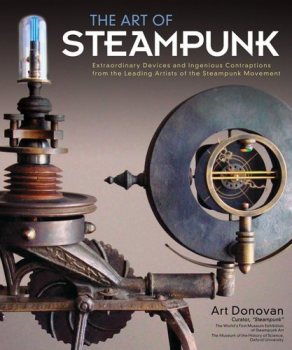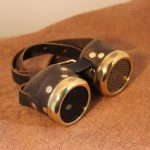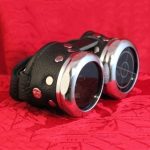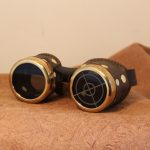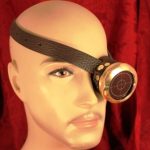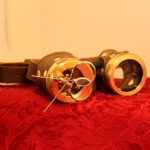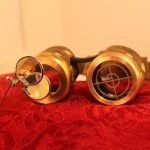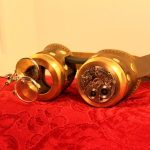The Art of Steampunk, Art Donovan
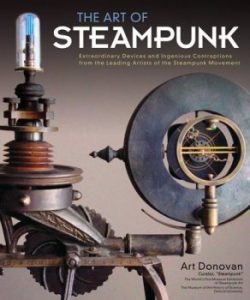
Like all up-and-coming genres, Steampunk artists have revolutionized the way we view beauty. Inspiring writers, producers, sculptors, painters, singers, and jewelry makers, this sub-culture is providing a unique scaffold from which to demonstrate style through self-expression of many forms. One great contribution of Steampunk to the world is through artistry. Creating attractive shapes and textured designs through cogs, gears, clocks, and varying shades of gray, these artists provide the world with a steamier version of Victorian-age grace.
And what better way to show off this beauty than in a museum? Art Donovan curated the world’s first steampunk museum exhibit at Oxford University’s Museum of the History of Science. Following this exhibition, Donovan compiled, wrote, and published a steampunk book featuring the work of many steampunk artists. “The Art of Steampunk” showcases the talent of the seventeen steampunk artists whose work were displayed in the museum exhibit, in addition to many other lesser-known, although equally gifted artists. Some of the designs include a heart made exclusively from clocks, numbers, and arrows; another design includes a taxidermy, red glass eye in an industrial robot sculptor! In the forward to the book, Donovan writes that creating steampunk items, paintings, and drawings gives him “sheer joy and delight,” adding that promoting the work of others in his book gives him complementary satisfaction.
One artist who is highlighted in “The Art of Steampunk” is Ann Pedro, an acclaimed and award-winning jewelry designer. Creating pieces for a perfect steampunk jewelry collection, Pedro gave a “steamy” twist to many pedestrian fashion looks. Her work is diverse enough to be featured in both high-class exhibitions and average steampunk homes. Another featured artist is Anna Dabrowska, a Polish artist who creates three-dimensional steampunk art in unusual textures, colors, and patterns. What makes her work so unique is that she gathers her supplies from common flea markets and thrift shops. This just goes to show you that you don’t need expensive materials to produce expensive products.
In addition to portraying the beautiful steampunk artwork, a writer named G. D. Falksen wrote a section entitled “Steampunk 101” to be included in the book. In this section, he answers all types of questions, addressing topics from the history behind steampunk, to the name “steampunk” itself. I think he sums this sub-culture up perfectly with, “Steampunk is a unique fantasy version of 19th century Victorian England, now imbued with high-tech digital devices, fantastic steam-powered machines, and all manner of surreal electro-mechanical contraptions that could only have been conjured by a mad 21st century scientist.”
Whether you are a steampunk veteran, or a curious thinker just expressing interest in a new art form, this book can amaze you with detailed artistry, bizarre contraptions, ingenious jewelry and fashion, and fascinating information. If you are a steampunk fanatic yourself, you may want to flip through this book for ideas on designing and creating your own steampunk masterpieces. And as Dabrowska teaches us: using everyday, household items to create beauty is just as easy and perhaps even more commendable than buying expensive supplies.
